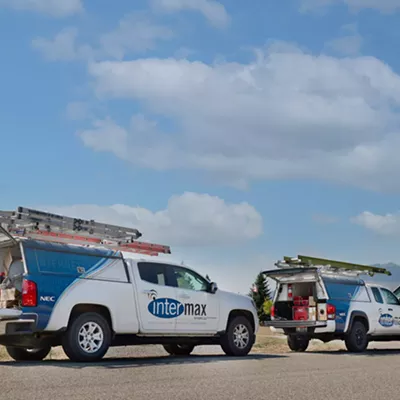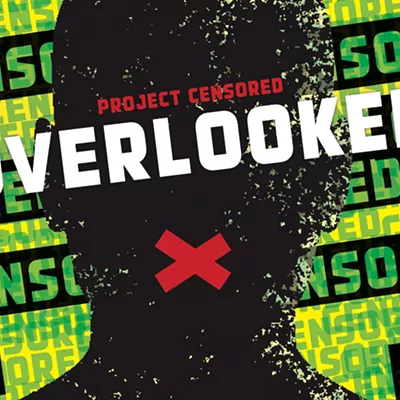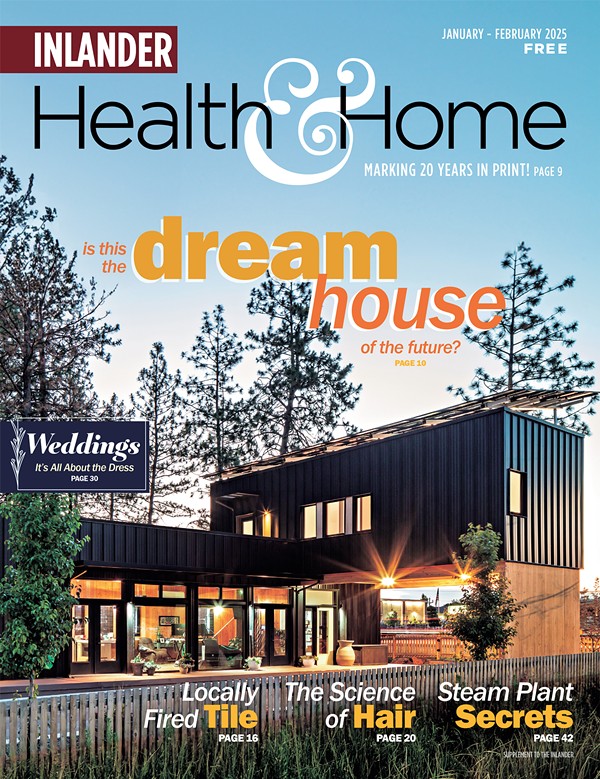
The newest generation of cellular technology, 5G, is being rolled out across the country, and Spokane is among the very first markets to get a taste of the staggeringly fast speeds.
Just a few 5G devices are available for customers to buy at the moment, meaning few people will truly benefit from the upgrades until more options hit the market later this year.
But as networks compete to get their newest tech out fastest, many consumers are still unclear exactly how the rollout will work and what it may mean for their service, their cybersecurity or even their health.
With small antennas being installed atop utility and light poles to roll out super-high speeds in parts of downtown Spokane, Cliff-Cannon and NorthTown already, here's an overview of what 5G could mean for the Inland Northwest.
LOW, MIDDLE, HIGH
First, 5G can be delivered on a variety of radio wavelengths, so long as it meets certain speed and service requirements that telecommunications companies have agreed to as 5G standards.
At its fastest, the technology promises to provide download speeds fast enough to get a feature-length movie to your phone in less than a minute, providing a fiber-speed rival for those who want to cut the cord and drop their traditional internet service providers.
T-Mobile's nationwide rollout in early December is likely to reach the most customers so far — about 200 million are in range already — because it focuses on a large swath of low-band spectrum in the 600 megahertz (MHz) range, similar to what's been used for 3G and 4G. That band was purchased at auction from an unused part of the spectrum once set aside for television broadcasting.
The 600 MHz spectrum is far-reaching, requiring far fewer installations of new antennas than other 5G technologies. While the service is certain to be faster than 4G, and will reach rural areas including much of North Idaho and Eastern Washington, this type of 5G on the lowest end of the spectrum won't deliver the gigabit-per-second speeds envisioned for the millimeter wave spectrums that companies like Verizon are pushing to develop instead.
However, should a merger between T-Mobile and Sprint be approved, that low-band and some mid-band spectrum that could be developed is likely to be much more reliable, says T-Mobile senior communications manager Joel Rushing.
"The biggest difference as you start to look at this low-band, mid-band and high-band spectrum is that low-band travels a lot farther, like miles from these cell sites," Rushing says. "It's great at penetrating inside buildings, whereas the higher spectrum [is] better for denser areas but it travels maybe half a block at most. Even leaves can block the signal or degrade the signal a little bit."
On T-Mobile's low-band, customers could see peak speeds of up to 100 megabits per second, but more likely will see an average of about a 20 percent speed improvement over 4G LTE, Rushing says. One added benefit is that some places will see service for the first time, including parts of North Idaho.
"Generally speaking, you'll see some speed improvements," Rushing says. "The dollar amount you'd have to put on scaling something just using millimeter wave, it's almost unfathomable. So definitely we think this is the right approach: Go broad first and we can continue over time to build off the network and see where those gaps are that we can fill with mid-band or millimeter wave."
But other networks such as Verizon, which rolled out 5G in tiny parts of Spokane and two dozen other cities in late December, are pushing for the massively faster millimeter wave upgrades, which require many new antennas placed closer together to deliver service.
Drivers in Spokane may have noticed the new, small antennas going up on top of existing streetlights and utility poles in some places. Because millimeter waves roughly in the 24-72 gigahertz (GHz) range can't travel very far and can't penetrate buildings as easily, they need to be installed on nearly every block to be effective, usually going on existing poles or buildings.
The main benefit is that spectrum's potential for insanely fast download speeds of multiple gigabits per second, which carriers envision could enable self-driving cars, remote robotic surgery, and augmented reality. For example, imagine holding your phone's camera over products in the store and instantly getting product information and reviews without searching online manually.
Verizon is also exploring third-party tools to help first responders see where phone users were fractions of a second before a disaster such as an earthquake struck, which could help search and rescue teams find survivors.
5G is also the type of service that could power the "internet of things," which requires many devices be connected to function in sync.
In Spokane, that could look like the amenities planned for the Central City Line, where stops will have reader boards that are instantly updated with bus times, as well as fare readers and surveillance cameras. Hooking those services up to existing fiber optic cables could cost close to $2 million, which the Spokane Transit Authority discussed at a meeting last spring. At the time, Spokane County Commissioner Al French suggested STA ask about the potential to hook those devices up wirelessly via 5G, asking if that might save money and time.
The new technology seems promising, but the rollout is also raising eyebrows globally as some question just how much we understand it.
CONCERNS
With the fastest 5G requiring many more antennas than ever before and using part of the spectrum not frequently used in the past, some of the main concerns have to do with cybersecurity, privacy and health.
The largest concern raised in communities from the European Union to the Pacific Northwest is whether millimeter waves may harm human health.
For the most part, it does not appear likely the non-ionizing radiation from 5G will cause any harm to human health. That type of radiation has not been proven to cause DNA mutations, although some studies have shown it can cause body temperatures to increase.
Radio frequencies are listed as "possibly carcinogenic to humans" by the World Health Organization; that puts them in the same category as things like coffee and aloe vera, but also several fossil fuel-related chemicals, none of which have strong enough evidence yet for the organization to say for sure that they're linked to higher rates of cancer.
In a 90-page online book from 2018, Martin Pall, a Washington State University professor emeritus of biochemistry and basic medical sciences, raises concerns about 5G frequencies' potential to cause everything from blindness to infertility. In it, he compiles information from dozens of studies and questions industry influence on government agencies.
"Putting in tens of millions of 5G antennae without a single biological test of safety has got to be about the stupidest idea anyone has had in the history of the world," Pall says in the document, which was written partly in response to a 2017 letter from nearly 200 scientists to the EU urging caution with 5G. "We have no biological safety testing of genuine 5G radiation."
Still, while most scientists will agree it's possible the science to date could be disproved, it's also generally agreed that if radio frequencies in the spectrum used for 5G were likely to cause health problems, that would already be evident after decades of television, cellphone and WiFi use.
While the number of cellphone and WiFi users ballooned from nearly nothing in the 1980s to hundreds of millions at present in the United States, cancer rates have essentially remained about the same.
The New York Times reported in 2019 that the basis of some common 5G fears spread on the internet was a 2000 study on WiFi's negative effects on brain tissue that didn't take into account the protective barrier that skin provides. The article also notes that Russian Television has been sharing more stories on 5G fears going into 2020.
Another Times story compares the fears to 1980s hysteria over high-voltage power lines being linked with potentially higher rates of leukemia in children. The initial study that found the connection was later disproved as others could not replicate its findings, but the fear stuck, the Times reports.
Others concerned with the rollout of 5G question its cybersecurity and privacy weaknesses.
The U.S. won't allow 5G hardware built by the Chinese company Huawei to be installed here, citing concerns the network could send sensitive information back to Chinese government servers, the New Yorker reported last year. Huawei has sued over the ban and denied the uploads would happen.
The same story notes that while the Federal Communications Commission (FCC) under the Obama administration had planned to require 5G systems be built with cybersecurity in mind from the start, the agency repealed that requirement under the Trump administration.
Still, the Cellular Telecommunications Industry Association explains that 5G security will improve upon 4G, including better encryption, device-specific updates, and cloud-based security measures that can carry over even when a device connects to WiFi.
OPTIONS
Cities are limited in what they can do to respond to citizen concerns about the rollout of the new technology. While some have passed ordinances trying to limit the number of antennas that can be installed in residential neighborhoods, the FCC is the authority for deployment.
In response to fears, the Portland City Council passed a resolution last spring demanding the FCC update its 5G research to address concerns that health impacts still aren't fully understood.
The FCC, meanwhile, has pushed for rapid 5G expansion, limiting the fees cities can charge for applications and restricting the timeline for approving permits and installing new antennas to 60-90 days, requirements that several cities including Seattle have opted to fight in court.
That suit is expected to be heard in the 9th Circuit Court of Appeals in February. In another case last year, a federal appeals court said the FCC can't exempt antenna applications from historic preservation and environmental review processes. ♦


























